Choosing the Best Smoke Detector for Your Bedroom
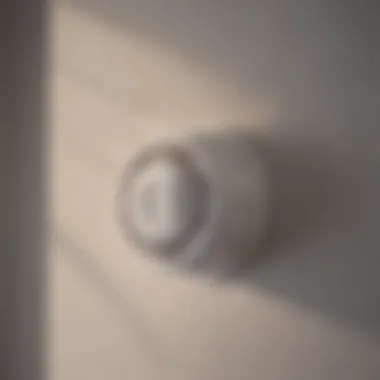
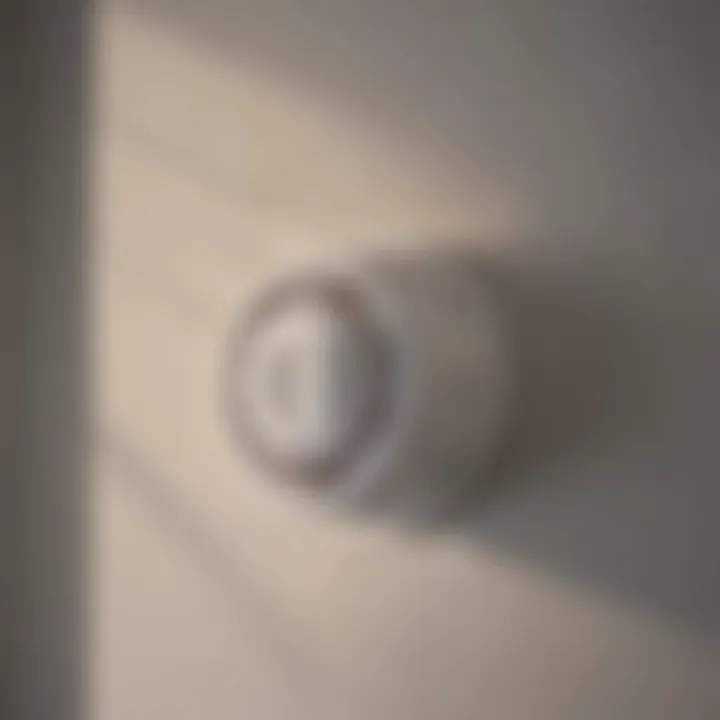
Intro
When it comes to safeguarding our homes, smoke detectors sit right at the top of the priority list. It's astonishing how often they can be overlooked, especially in private spaces like bedrooms where many people spend a significant portion of their lives. Sleep is sacred, and while it’s usually regarded as a time to recharge, it can also be a vulnerable moment. Selecting the right smoke detector isn't just a precaution; it's an essential step towards ensuring that our peaceful nights aren't interrupted by potential disaster.
Let's dive deeper into understanding smoke detectors' various trends in design and functionality to create not just a safe environment but one that complements your personal style.
Understanding Smoke Detectors
When it comes to safeguarding our homes, having a solid grasp of basics is crucial. This is especially true when discussing smoke detectors, which play a vital role in fire prevention. Understanding smoke detectors is not just a technical necessity; it’s about protecting the most precious asset we have—our loved ones. In this section, we’ll explore what smoke detectors are and how they function, shedding light on their essential purposes and benefits in bedrooms.
What is a Smoke Detector?
A smoke detector, in simple terms, is a device designed to sense smoke as an indicator of fire. These devices are engineered to alert occupants of a home when smoke is detected, giving them critical time to act. There are several types available on the market, and recognizing their characteristics can make all the difference in ensuring safety.
Most of the time, they come equipped with loud alarms, often reaching above 85 decibels, sufficient to wake a person from sleep. However, many may not realize that a smoke detector is more than just a loud noise maker; it's a life-saving instrument that needs careful consideration in terms of placement and type.
How Smoke Detectors Work
Smoke detectors operate under the principle of detecting particles emitted during combustion. There are different technologies employed in smoke detectors, which can be grouped mainly into two categories: ionization and photoelectric.
- Ionization Smoke Detectors:
- Photoelectric Smoke Detectors:
- These detectors use radioactive material to ionize air in the sensing chamber.
- When smoke particles enter the chamber, they disrupt the ionization process, triggering the alarm.
- Instead of radioactive material, these rely on a light source and a sensor. When smoke enters the chamber, it scatters the light and triggers the alarm.
Understanding how smoke detectors function helps one appreciate why having them is non-negotiable, especially in bedrooms where people are most vulnerable while asleep.
"Knowing how each type of smoke detector works gives you the power to choose the right one for your home."
Additionally, many modern units combine these technologies to enhance detection capabilities, making dual-sensor smoke detectors a popular choice.
When selecting a smoke detector, homeowners often overlook how vital it is to match the right detector to the specific needs of the environment. In summary, knowing the ins and outs of smoke detectors not only promotes safety but also empowers homeowners to make informed decisions regarding their fire safety measures.
Types of Smoke Detectors
When it comes to safeguarding your home, knowing the different types of smoke detectors can be a game changer. Each type serves a unique purpose and has specific advantages that cater to various needs. Depending on your bedroom's layout, the types of detectors you choose can significantly impact your safety. Understanding these options is crucial for making an informed decision about your smoke detection system.
Ionization Smoke Detectors
Ionization smoke detectors are quite common and often less expensive compared to other types. They work by utilizing a small amount of radioactive material that ionizes the air within the detector. When smoke enters the unit, it disrupts this ionization process, triggering the alarm.
Pros:
- Faster response to flaming fires with small combustion particles, making them effective for situations like a burning mattress.
- Generally, they are more affordable and can often be found at local stores.
Cons:
- They can be prone to false alarms from cooking smoke or steam.
- Less effective with smoldering fires, which may emit larger smoke particles earlier in their development.
Photoelectric Smoke Detectors
In contrast, photoelectric smoke detectors utilize a light beam and a sensor. When smoke enters the detection chamber, it scatters the light beam and triggers the alarm. This type is particularly sensitive to smoldering fires, which may not produce immediate flames.
Pros:
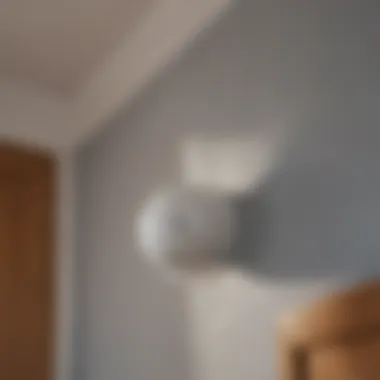

- Offers highly effective detection of smoldering fires, like those from burning upholstery.
- Less likely to trigger false alarms from cooking or regular household activities.
Cons:
- May have a slower response time than ionization detectors for fast-burning fires.
- They can be a bit pricier compared to ionization models, depending on the brand and features.
Dual-Sensor Smoke Detectors
For those who want the best of both worlds, dual-sensor smoke detectors combine ionization and photoelectric technologies. This means they are capable of detecting both flaming and smoldering fires more effectively. Dual sensors are an excellent middle ground, offering comprehensive protection tailored for various situations.
Pros:
- Capable of responding to a broader range of fire types, offering enhanced safety in bedrooms where various ignition sources exist.
- These detectors can help reduce the frequency of nuisance alarms common in single-sensor units.
Cons:
- While invaluable for safety, they typically have a higher price point and may require more frequent maintenance.
- Larger size may impact aesthetics, especially in smaller bedrooms.
Smart Smoke Detectors
With the rise of smart home technology, smart smoke detectors have entered the scene. These detectors connect to your home's WiFi network and often come with features allowing you to receive alerts on your smartphone. Some models even provide video feeds of your home through integrated cameras and enable voice alerts.
Pros:
- Instant notifications when you’re not at home, allowing for quick action if a fire starts.
- Some models integrate with smart home systems, meaning you can monitor your home’s safety with ease.
Cons:
- Higher initial investment is common, not just for the devices but also for maintenance over time.
- Connectivity issues can lead to a false sense of security if not properly set up and maintained.
"Understanding each type of smoke detector is essential in devising a fire safety plan that fits your lifestyle and home environment."
Factors to Consider When Choosing a Smoke Detector for Bedrooms
Selecting a smoke detector for your bedroom isn’t just about picking a device off the shelf. It’s about understanding the multitude of factors that surround safety in the place where you breathe deeply at night. While smoke detectors are vital in all areas of a home, their significance multiplies in bedrooms, where sleep can keep you unaware of dangers lurking nearby. Let’s dive into the essential aspects that you need to consider when making your choice, ensuring your peaceful slumber remains undisturbed by the unexpected alarms of an ill-suited detector.
Sensitivity and Response Time
When it comes to smoke detectors, sensitivity and response time can be a game-changer. A highly sensitive detector can alert you to a fire source at its earliest signs, potentially saving lives. However, it’s a tightrope act; overly sensitive detectors might be prone to false alarms, perhaps triggered by steam from a bathroom or burnt toast.
The response time also varies between models. Some detectors fire off an alarm almost instantly upon detecting smoke, while others might take mere seconds longer. This delay might seem trivial, but in the case of an actual fire, every second counts. Look for devices that balance sensitivity with a strictly defined response time to ensure your sleep isn’t fractured by unnecessary alarms, yet still, maintain safety.
Noise Levels and Alerts
Not all smoke detectors sound the same. Some emit a soft, low-pitched beep that can be more tolerable in the early morning hours, while others blare loudly—like a car alarm at three in the morning. When considering which smoke detector to install, think closely about the noise level of the alerts.
You should also ponder the alert system. Some modern detectors come with features that notify you through your smartphone, alongside or instead of beeping, allowing you to wake up gently and understand the situation without panic. Furthermore, devices equipped with visual alerts, such as flashing lights, can offer another layer of awareness, particularly useful for those who may have hearing impairments.
Power Source Options
The heart of any smoke detector lies in its power supply. You can choose from battery-operated, hardwired, or even now popular smart detectors that connect to your home’s Wi-Fi. Battery-operated detectors are generally easier to install and can be placed anywhere without worry of wiring. However, batteries can die unexpectedly, leading to potential safety risks. Regular maintenance, in this case, becomes paramount.
Hardwired units often offer more reliability, connecting directly into your home’s electrical system. They usually incorporate battery backups to ensure operation during power outages. Also, keep an eye out for smoke detectors that allow for power source customization, providing flexibility to suit your individual preferences and ensuring uninterrupted protection.
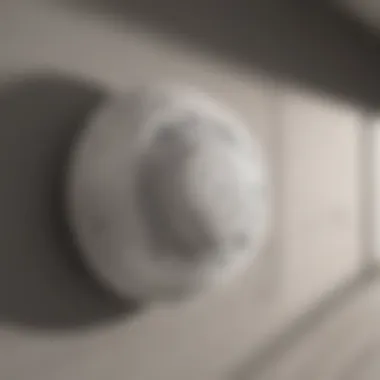
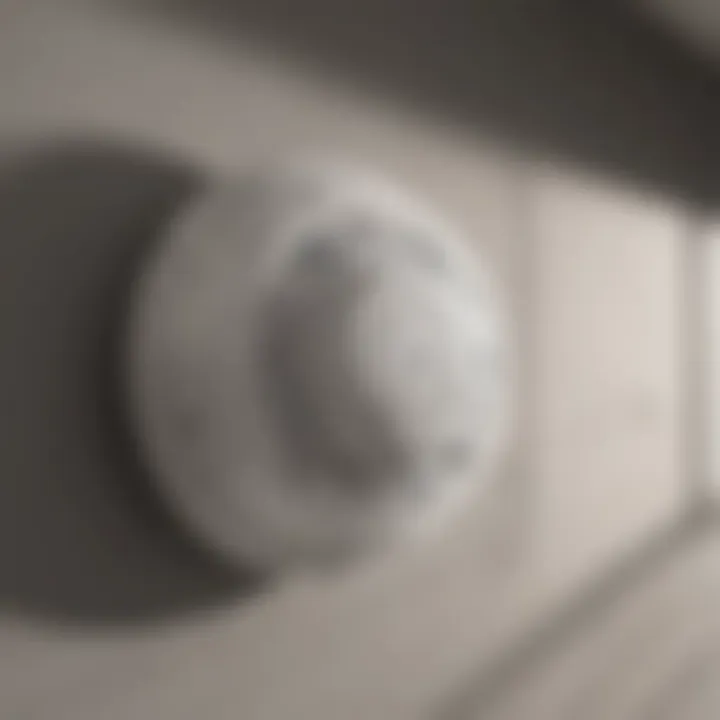
Design and Aesthetics
Functional doesn’t have to mean ugly, especially in a bedroom, which is often a sanctuary from the chaos outside. When selecting a smoke detector, take note of its design and how it fits within the aesthetics of your personal space. Many manufacturers now offer sleek, modern designs or even decorative covers that blend well with bedroom decor.
Ultimately, your smoke detector should not just be an afterthought on the ceiling; it should complement the room. After all, when something is visually appealing, it encourages you to maintain it properly. Therefore, choosing a unit that you find visually appealing can also translate to better care and attention given to its functionality.
Key Takeaway: When selecting a smoke detector for the bedroom, prioritize sensitivity and response time for safety, consider noise levels that fit your lifestyle, opt for a power source that guarantees reliability, and don’t underestimate the importance of design and aesthetics.
By keeping these aspects in mind, you'll be better equipped to choose a smoke detector that works for your specific needs, creating an ideal bedroom environment that is both safe and inviting.
Best Practices for Installing Smoke Detectors in Bedrooms
When it comes to safety, smoke detectors are your first line of defense against fire hazards. Proper installation of these devices in bedrooms is crucial, given that it's where people spend a significant amount of their downtime, often unaware of potential dangers. In considering best practices for installing smoke detectors in these vital spaces, several factors highlight the importance of thoughtful placement and adherence to safety guidelines.
One key benefit of strategic smoke detector installation is the increased likelihood of early detection. While sleeping, individuals might not notice smoke or hear alarms from distant rooms. Thus, a smoke detector mounted in the bedroom can provide immediate alerts, increasing response time and potentially saving lives.
Moreover, typical bedroom design elements, such as bedding, curtains, and even clothing, can influence smoke propagation. Thus, knowing how to navigate these factors when choosing installation spots can make an important difference.
Optimal Placement in the Bedroom
Placement of smoke detectors in the bedroom is not just a matter of convenience; it’s a safety strategy. Here are a few focal points to consider:
- Near Sleeping Areas: Smoke can spread quite fast, so placing detectors near sleeping areas ensures that the device is within earshot during critical moments. A good practice is to have one detector in each sleeping room and at least one in the hall that leads to those rooms.
- Away from Air Vents: Avoid placing detectors near air vents or ducts. These features can alter airflow and potentially displace smoke away from the detector, delaying alarm activation.
- Avoid Cooking Zones: While the kitchen is often the source of many alarms, placing a detector too close can lead to frequent false alarms, causing unnecessary disturbances. It's advisable to keep smoke detectors focused on the sleeping areas rather than cooking spaces.
By following these guidelines, you maximize the effectiveness of each smoke detector installed, making it an integral part of your home's safety infrastructure.
Mounting Height and Location Guidelines
Proper mounting height is essential for ensuring that smoke detectors perform at their best. Most detectors work best when they are mounted on the ceiling or high on the wall because smoke rises. Here are some important mounting tips:
- Ceiling Mounting: If you’re opting for ceiling installation, position the detector at least four inches away from the wall. This allows for better air circulation, supporting quicker detection of smoke.
- Wall Mounting: If wall mounting is preferable, install the detector at least four to twelve inches from the ceiling. This spacing compensates for smoke settling lower than the ceiling prior to the alarm sounding.
- Room Size Considerations: For larger bedrooms, consider placing multiple detectors to ensure maximum coverage. Keeping sound levels in mind, especially if shared bedrooms are part of a floor plan, can help determine how many detectors are needed.
Following these mounting guidelines ensures that your detectors are not only functional but also effective in providing the protection each household deserves. After all, when it comes to safety, there's no room for half measures.
Maintenance and Testing of Smoke Detectors
Maintaining and regularly testing smoke detectors in bedrooms is more than just a recommended practice; it's a crucial part of ensuring that the device will respond promptly in an emergency. When the stakes are high, like in the case of a fire affecting sleeping areas, prevention and preparedness take precedence.
Keeping smoke detectors in top working condition enhances reliability. A well-maintained detector can significantly lower the risk of false alarms, which often lead to complacency. Moreover, installing a smoke detector isn’t enough; one must commit to the ongoing upkeep. Neglecting this can spell disaster when you least expect it. Simple yet effective maintenance practices go a long way in ensuring peace of mind, knowing your loved ones are protected while they sleep.
Regular Testing Protocols
Setting a regular testing schedule for your smoke detector is key. Most experts suggest testing it at least once a month to confirm that it works properly. You can easily do this by pressing the test button on the device. If loud chirps or sounds emanate, it’s in good shape.
However, if you hear nothing, it’s time to investigate further.
- Create a Calendar Reminder: Putting systems in place helps. You might use a phone app or a physical calendar.
- Participate with Family: Make it part of family routine. Get everyone involved - turns it into a family matter rather than a personal chore.
- Keep a Record: Documenting your test date can be helpful. Jotting it down allows you to track performance and stay current.
Battery Replacement and Lifespan
Batteries in smoke detectors are not meant to last forever. For battery-operated models, experts recommend changing the battery at least once a year. Some folks even suggest aligning it with an occasion or holiday – think of it like a New Year’s resolution!

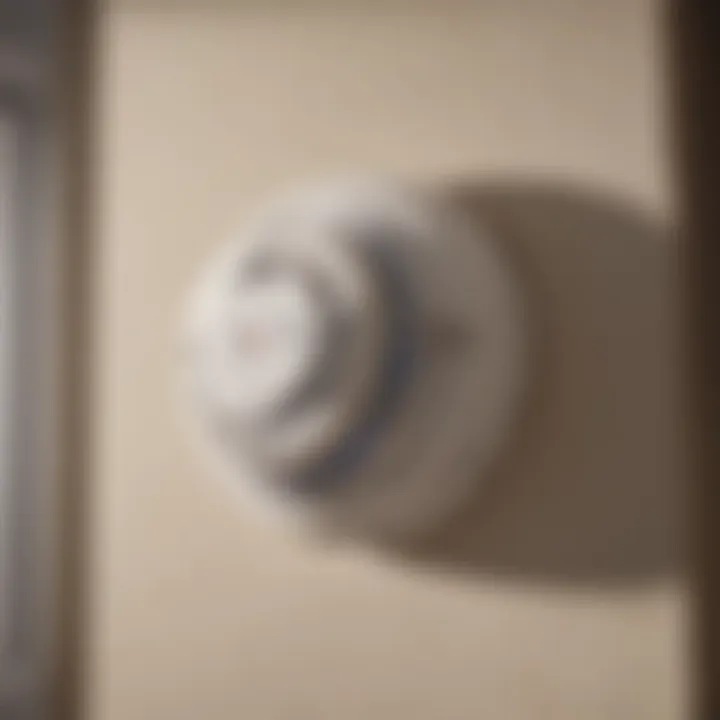
Furthermore, many detectors have a lifespan of around 8 to 10 years. After that time, it's advisable to replace the unit entirely. Old detectors may not respond effectively to smoke. Always check the manufacturer's instructions for specifics, as some units have different guidelines.
- Use Quality Batteries: Always choose reputable brands. Cheaper batteries might save some bucks now; however, being penny-wise can lead to being pound-foolish later on.
- Consider Lithium Batteries: For many newer models, lithium batteries last longer and can even be sealed within the unit for added convenience.
Signs of Malfunction
Every smoke detector has its quirks, and sometimes, a malfunctioning unit might send up red flags. If your smoke detector starts to give intermittent signals, be alert. Here are warning signs to watch out for:
- Frequent False Alarms: If it beeps constantly even when there’s no smoke, it might suggest dust or insects in the device.
- Chirping between Tests: A steady chirp typically indicates a low battery, while random chirps may signal the need for a replacement.
- Physical Damage: Dents or cracks in the unit can lead to failure.
Always trust your instincts. When in doubt about a smoke detector's reliability, replacing it is often the wisest course of action.
Legal and Safety Regulations
Understanding legal and safety regulations regarding smoke detectors is crucial for safeguarding your home and loved ones. These regulations dictate the standards and requirements that ensure smoke detectors function effectively in detecting fires. Compliance not only protects occupants but also helps avoid potential fines from local authorities.
When homeowners consider the best smoke detector for bedrooms, they must navigate through various guidelines imposed by governmental and safety organizations. Ignoring these regulations could not only render installations ineffective but also place occupants at risk. Furthermore, adherence to these legal frameworks may enhance the property’s value and marketability.
National Fire Protection Association Guidelines
The National Fire Protection Association (NFPA) offers a comprehensive set of guidelines that outline the standards for smoke detectors, including their installation, maintenance, and performance. Here are some essential points:
- Installation Locations: NFPA recommends placing smoke detectors in every bedroom, outside each sleeping area, and on every level of the home, including the basement. This strategic placement significantly increases the likelihood of early fire detection.
- Maintenance Protocol: Periodic testing of smoke detectors is a must. According to NFPA, homeowners should test their smoke alarms monthly to ensure they operate correctly.
- Lifecycle and Replacement: Smoke detectors have an approximate lifespan of 10 years. The NFPA advises replacing units that have exceeded this age to maintain effective fire detection.
Regulations from NFPA serve as a reliable foundation for homeowners. By keeping these directives in mind, a household can establish a safer living environment for everyone.
Local Building Codes and Requirements
Local building codes further complement the national guidelines by adding specific requirements based on regional needs. These codes can differ significantly depending on locale; hence homeowners must familiarize themselves with local laws. Here are some considerations:
- Local Variations: Some jurisdictions may mandate that smoke detectors be interconnected. This means if one alarm goes off, all alarms in the home will sound, enhancing alertness in case of a fire.
- Testing and Compliance: Many cities have rules that require smoke detectors to pass inspections at set intervals. Failure to comply can result in penalties or even issues when selling a property.
- Accessibility Features: Certain areas might encourage the installation of devices designed for the hearing impaired, such as smoke alarms with visual alerts or vibrating alarms.
Ensuring that your smoke detectors comply with local building codes is as crucial as following national guidelines. Doing so not only ensures safety but also builds a sense of responsibility in protecting one's family and community.
By understanding and adhering to both national and local regulations, homeowners can significantly reduce risks and improve safety within their homes.
The End
In wrapping up our discussion on selecting the right smoke detector for bedrooms, it's imperative to recognize the gravity of this choice in safeguarding not just property, but lives. The bedroom, often deemed as one's sanctuary, necessitates an exceptional level of protection, as it's where individuals are at their most vulnerable during sleep. Understanding the intricate layers of smoke detection technology, combined with the nuances of individual needs, ensures that personal safety is well prioritized.
The selection of a smoke detector hinges on several key factors outlined throughout this article. From sensitivity and response time, which directly correlates with the detector's ability to identify a fire early, to considerations concerning noise levels and design, every element contributes to an effective fire safety strategy. Furthermore, adhering to local building codes and National Fire Protection Association guidelines provides a safety net of compliance, reinforcing that the installed devices are of the highest standard.
To summarize, the ideal smoke detector must accommodate the unique concerns of the household while also offering reliable performance. Implementing best practices for installation, regular maintenance, and awareness of potential malfunction signs are necessary protocols to foster a safe living environment.
"Safety isn't just a priority; it's a responsibility. Choosing the right smoke detector is a crucial step in fulfilling that responsibility."
This crucial decision enhances peace of mind during those late-night hours, allowing for uninterrupted rest. The ramifications of neglecting smoke detection can be severe, yet with proper knowledge and application, one can ensure that their bedroom serves not only as a place for rest but also becomes a bastion of safety.
Summary of Key Points
- The bedroom is a critical area for smoke detector installation, enhancing personal safety during sleep.
- Evaluate types of detectors based on individual household needs, focusing on sensitivity and the potential for false alarms.
- Adhere to local regulations and safety guidelines to ensure compliance and effectiveness.
- Installation height and location matter—position smoke detectors correctly to maximize their effectiveness.
- Regular maintenance and testing of smoke detectors are essential to ensure they function at all times.
Final Recommendations
When selecting a smoke detector for a bedroom, consider these recommendations:
- Choose Detectors Wisely: Opt for photoelectric or dual-sensor detectors for bedrooms, as they are more effective at detecting smoldering fires without causing nuisance alarms.
- Keep it Accessible: Ensure that detectors are easily reachable for maintenance, preferably mounted on walls or ceilings near sleeping areas.
- Plan for Power Supply: Either hardwired or battery-operated options should be considered, keeping in mind battery replacement schedules to avoid malfunctions.
- Maintain a Schedule: Regularly test your smoke detectors at least once a month and replace batteries as needed, often recommended at least once a year.
- Stay Informed: Keep abreast of any changes in local regulations and technology advancements in smoke detection for the best outcomes.
With these strategies in mind, homeowners can confidently make decisions that bolster safety in one of their most cherished spaces.















